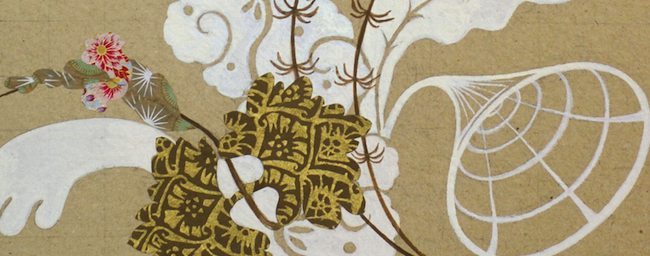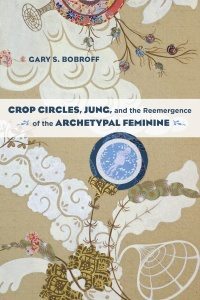
Proof that Crop Circles Are Not a Hoax
Categories: Excerpt Metaphysics & Unexplained Phenomena Science & Cosmology
by Gary S. Bobroff
In the follow excerpt from Crop Circles, Jung, and the Reemergence of the Archetypal Feminine, Gary Bobroff provides readers with some evidence against the theory that crop circles are just a hoax. As part of the ongoing debate, this information might just change where you stand on the topic!
Tags: Gary S. BobroffBody of Evidence
What gave Crop Circles validity to the farmers who discovered them and looked at them closely enough was the presence of physical changes in the plants themselves. Uniformly worldwide, the flat appearance of the circle is generated not by the stems of the plants being broken down or forced over, but by a ninety-degree bending of the plant itself at the root node (the first node above ground) in many of the affected plants. In the area of the design plants show: bent rather than broken stems (the plants constructing the design are not pushed over as they would be in a hoax, but rather anatomically altered), stretched plant nodes (the part of the plant at which its sections are joined together are extended) and expulsion cavities (the appearance of being blown out from the inside at lower nodes). In the formation’s construction, the grain itself is woven together flat along the ground, with one layer beneath the next set at cross angles, fans of wheat one below the next, folded gracefully together and hidden beneath the formation’s top surface. Despite these anatomical changes, plants remain fully alive and will continue to grow. Within days they will begin to reorient themselves toward the sun, and slowly, one by one, once again stand up. Also noticeable to farmers is the fact that the plants themselves are left unbruised, even crops that bruise easily or snap when bent by force. While these anatomical changes alone distinguish Crop Circles from human-made hoaxes, the farmers, who most often discover the formations, also attest to the formation’s authenticity. Speaking to the lack of evidence of intrusion found, they argue that if there had been anyone on their land they would know, often noting the absence of broken stems and the lack of footprints in their chalk, dry or wet, muddy fields. Often to their own continuing astonishment, farmers continue to report this, following their discovery of a Crop Circle in their fields. Despite their testimony and the presence of this physical evidence, it was only with the discovery of additional scientific evidence that the phenomenon began to be recognized as authentically enigmatic.
The anatomical anomalies in the affected plants, described above, were first publicly documented in a scientific journal by biophysicist W. C. Levengood in 1994. Between 1994 and 1999, Levengood published three peer-reviewed scientific papers on the study of the changes to the plants in national and international journals (he is the author of forty-seven other peer-reviewed papers). Published in 1994, his first article documented the anatomical anomalies in the formations, including the expansion of the stem nodes. Levengood and others have since documented that changes in node length are found to be present with linearly decreasing effect from the center of the formation out into the surrounding crop. Even plants left standing within the formation and surrounding plants outside of the formation show the presence of this effect. Since that time, further research has found that changes in node length follow the widely applied Beer-Lambert principle of physics. [1]
However, along with externally visible physical changes, Levengood also noticed two less obvious yet startling categories of change to the plants themselves: cellular and germinal. Utilizing an optical microscope, in hundreds of international plant samples tested, Levengood observed an alteration of the cellular walls within the bract tissue in affected plant nodes: “On the microscopic level, abnormal enlargement of cell wall pits in bract tissue (a thin membrane which surrounds the seed-head and through which nutrients pass to the developing seed) were found.” [2] This change, which reflects sudden heating from inside the plants, enables easier nutrient transfer to the developing seed embryos. This change in cell structure, including expanded and elongated cell wall pits, is clearly evident in microscopic photo images. [3] In addition, and likely in connection to these changes, changes to the appearance and germinal qualities of the seeds were also found. Nancy Talbott (a co-researcher who later worked with Levengood) summarized the three categories of change to the seed: the absence of seeds in normal-appearing seed-heads, stunted and malformed seeds in normal-appearing seed-heads, and a marked alteration in seed germination and growth patterns (both depressed and increased). When a Crop Circle formation has arrived early in the plant’s life cycle, later growth in seed-head size is reduced dramatically, or the seeds themselves may be stunted. Further, Talbott describes, “however—and this is terribly interesting—if a crop formation occurs in a much more mature crop, then what we see is extremely energized seeds, so that they then reproduce at five times the normal rate. . . . Now, whatever in the world is doing this, I should think would be of great interest to anybody.” [4]
As one might expect, these changes to the seeds and to their growth rates are reflected in changes to later plant growth. New growth in the following years seem to mirror, either by overgrowth or by lack of growth, the shape in which the previous year’s Crop Circle appeared. Brilliant photo illustration of this effect can be seen online. [5] These changes have been noted repeatedly by farmers and researchers: Burke, Levengood, and Talbott (BLT) describe a 1999 formation at Barbury Castle, England, in which “as the new crop began to grow in the field, the ‘ghost’ of the 1999 formation could easily be seen, in spite of the fact that the field had been tilled and re-planted as usual . . . the areas which had been flattened in 1999 were both a darker green in color than the rest of the crop, and they were at least 6–8 inches taller.” [6]
In 1995, Levengood added to these findings with an article in which he noted the presence of iron magnetite deposits on the plants. These particles, which seem related to micrometeorite dust in the atmosphere, are also found to be present in the soil beneath the formations themselves. This iron magnetite becomes fused with the wheat and earth within the formations—occasionally to such a degree that the wheat itself can be picked up with a magnet. One can view an example of the presence of metallic particles within the affected crop online and in the documentary film Quest for Truth (2002)—which along with Suzanne Taylor’s What on Earth? Inside the Crop Circle Mystery (2009) is highly recommended. As with the changes in node length, these mysterious magnetic particles also follow a linear distribution pattern outward from the center of the formation into surrounding crops, and are also found to be present on non-flattened crops present within the formation.
Levengood and the BLT team pioneered the vast depth of scientific research that has been performed on samples from the formations, and they continue to do so today… Other studies continue to confirm these initial findings, adding new evidence, corroborating, and building upon them.
Excerpted from Crop Circles, Jung, and the Reemergence of the Archetypal Feminine by Gary S. Bobroff. © 2014, North Atlantic Books.





